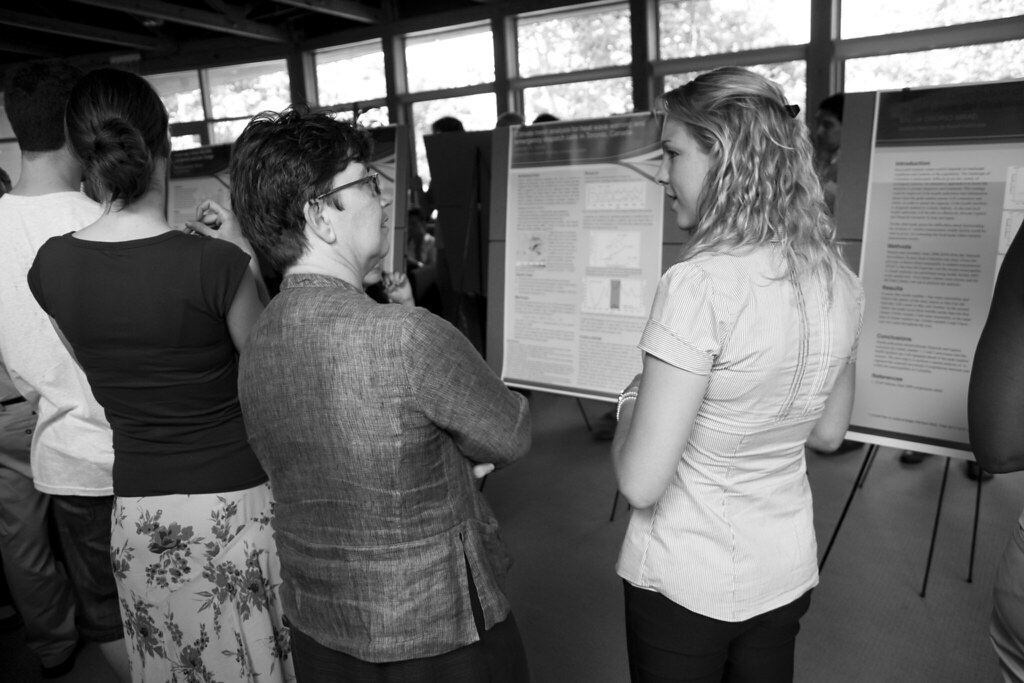
By Elisabeth Gawthrop, Climate and Society ’13
Diseases influenced by climate include malaria, dengue fever and cholera. Changes in climate can alter how these and other infectious diseases develop and spread. Scientists at the International Research Institute for Climate Society (IRI) research ways to mitigate the effects of current transmission and future changes of such diseases as participants in the Pan American Health Organization (PAHO)/World Health Organization (WHO) Collaborating Center on Early Warning Systems for Malaria and other Climate Sensitive Diseases.
IRI has been a collaborating center for over 8 years and the contract was recently extended for an additional four years. The renewal continues a partnership that seeks to continue to develop climate information systems that can map, monitor and forecast climate-related disease risk. IRI is one of nearly 200 Collaborating Centers in the 15 countries in the Americas that is concerned with a very wide range of public health issues.
IRI Senior Research Scientist Madeleine Thomson directs the center. Below are some of her thoughts on the renewed partnership.
How does climate play a role in the spread of disease? How does the research of this center address the climate-health dynamic?
Climate influences health both directly and indirectly. Heat waves and heavy rains are just two climate problems that can have direct impacts on people’s health. However, shifts in climate can also increase vector and waterborne diseases, create problems with food safety and cause plenty of other indirect impacts.
Our research focuses on some of these indirect impacts, particularly how to better use climate and environmental information to improve health interventions for infectious diseases and nutrition. Fundamentally, we use climate and environmental knowledge and information to improve our understanding of how climate alters disease transmission and outbreak timing and estimate populations at risk. We also monitor and predict year-to-year variations in disease incidence and longer-term trends. Finally, we seek to improve assessment of the impact of interventions by removing climate as a confounder.
Does climate have more influence on disease in some areas of the world? How do you choose where to focus the center’s research and which diseases to study?
Climate-related public health impacts are most pronounced in developing countries around the world but especially in Africa since they often lack the protection of basic infrastructure and public health services. The livelihoods and nutrition security of millions of people, particularly girls and women, in Africa are heavily dependent on rain-fed agriculture and seasonal water resources. That increases their exposure to insect and waterborne diseases and the harmful effects of chemical pollutants. Unsafe food and lack of sanitation only heighten the risk of contracting and transmitting diseases. All of these health risks are highly sensitive to extreme weather events and climate variability, and will tend to be exacerbated by ongoing climate change.
We work on problems identified by our partners where climate has a key role to play and where we have some in-house capacity or partnership to support the engagement. The big problems we’re currently looking at are malaria and meningococcal meningitis, aspects of nutrition and flood-related public health disasters.
Can you tell us about a specific project associated with the partnership? Was the PAHO/WHO collaboration essential to the success of the project, and if so, how?
Primarily our partnership has focused on malaria and the development of early warning systems. Through our PAHO/WHO Collaborating Center we have engaged in a Global Environment Fund project in Colombia on climate change adaptation with a focus on malaria early warning. As a result of this engagement, Daniel Ruiz, a former PhD student at Columbia and Colombia native, has worked with IRI over the last five years on modeling malaria, understanding climatic drivers and creating climate tools for use in national decision-making.
A specific non-malaria project that has developed as a result of this partnership is the Meningitis Environmental Risk Information Technologies (MERIT) project. The MERIT initiative was launched in 2007 as a multi-sectoral partnership led by WHO to provide an enabling platform for health specialists to work together climate and environment specialists. The focus of the program thus far has been using climate and other novel information to predict meningitis in the Sahel region of Africa.
How does the collaboration benefit the IRI?
The PAHO-WHO Collaborating Center helps IRI researchers connect with the other research, policy and practice teams connected to WHO to solve problems together. It also provides a vehicle for sharing our research results with players on the global stage as well as national Ministries of Health around the world. Because it supports our frequent engagement with regional and national policy makers, it also provides a reality check for what type of information is most useful to health policy makers in developing countries.
How has the IRI’s partnership with WHO/PAHO evolved since the collaboration began in 2005?
The initial focus of the IRI partnership with PAHO/WHO was malaria early warning. Over time we have been able to widen the scope of the use of climate information in research, demonstration, education, advocacy and services. As I said, we work with a number of different parts of WHO and have extended the work to include meningococcal meningitis, loa loa (eyeworm) and, most recently, nutrition.
What do you envision as outcomes for the following four years as a WHO/PAHO collaborating center?
WHO is increasingly engaged in using climate information in routine health decision-making through its commitment to the Global Framework of Climate Services (GFCS). The IRI Collaborating Center will contribute to those efforts. In addition, the recent Climate and Health Atlas produced by WMO/WHO highlights the work of the IRI and its many partners. Over the next four years my hope is that we will have many more examples of applied research in this area as well as observe greater uptake of research results in policy and practice.



